When’s the best time to book a flight? How can a free upgrade actually cost you money? Why are duct tape, petroleum jelly, and dental floss among the most valuable things you can pack? Find out the answer to these and many other questions with our list of the 101 travel tricks you need to try. (And then add your own tips and tricks in the comments area below!)
Image Gallery
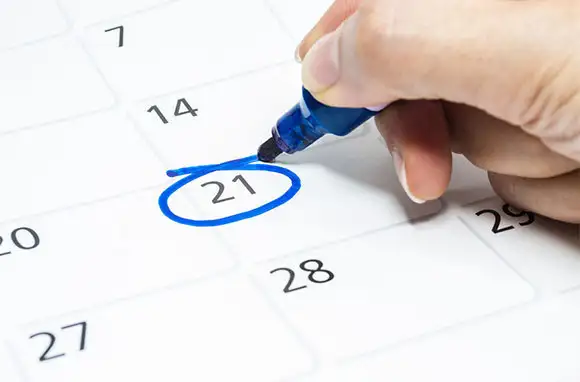
Purchase Your Flight on Tuesday Afternoon
If you're trying to get the best airfare, when you book can make as big a difference as when you fly. The results of a recent FareCompare study offer some very specific advice: For domestic airline tickets, the best time to buy is Tuesday at 3:00 p.m. ET.
The study also cautions against booking on Saturday or Sunday, since airlines tend to pull discounted airfares in advance of the weekend.

Purchase Your Flight on Tuesday Afternoon
If you're trying to get the best airfare, when you book can make as big a difference as when you fly. The results of a recent FareCompare study offer some very specific advice: For domestic airline tickets, the best time to buy is Tuesday at 3:00 p.m. ET.
The study also cautions against booking on Saturday or Sunday, since airlines tend to pull discounted airfares in advance of the weekend.
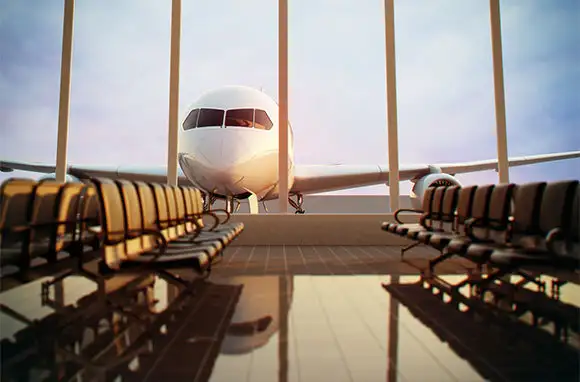
Choose Your Travel Days Wisely
If you've ever done a flexible airfare search, you know just how dramatically fares vary based on the day of the week. Choose your days wisely and you can save hundreds of dollars. Tuesdays, Wednesdays, and Saturdays are the least-popular travel days for domestic flights. For Europe flights, seats are in lower demand on Mondays, Tuesdays, and Wednesdays. So if you're looking for a deal, you might find that flying on these lower-demand days means better prices for you.
Adapted from the story When to Book, Fly, and More: Tips for Perfect Travel Timing by Christine Sarkis. Follow Christine on Google+.
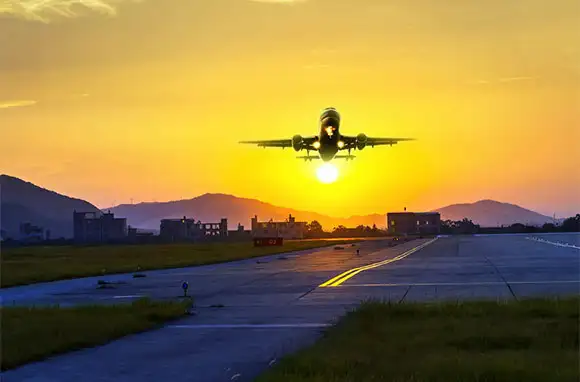
Fly in the Morning
Since air traffic drops off significantly late at night, early morning offers most airlines and airports a clean slate from which to launch a new day of on-time departures. And while these best intentions often don't make it to lunchtime, booking an early-morning flight can mean avoiding the worst delays of the day.
Keep in mind that this is a general rule, and it has its exceptions. For instance, Brett Synder, The Cranky Flier, notes that at San Francisco International, morning fog (which often burns off by early afternoon) tends to delay early flights. And airports with runway construction are more prone to delays at all times of day.
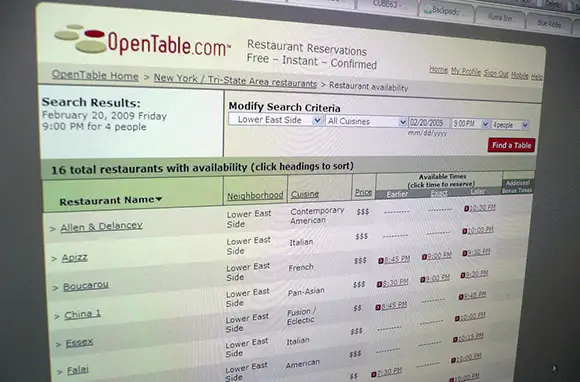
Cancel for Free
This is a no-brainer, but it's something that many travelers don't think to do. If you missed the cancellation window for your hotel, restaurant, or car booking but can still change the reservation date free of charge, move your reservation back by several weeks or months. Then call back to cancel with a different representative. Sneaky? Sure. But it works, and you'll never get stuck with a lousy cancellation fee again.
Some reservation services, like OpenTable, allow the representative to see the "history" of the booking, but many pressed-for-time agents won't bother to check.

Check International Airline Websites for Deals
When booking international flights, don't forget to compare fares to those on the airline's foreign-language website. If the airline is running a sale in a different regional market, you may be able to score sizable savings on your overseas flight.
For example, a recent search on Polish airline LOT's English-language website found a March flight from New York to Warsaw priced at $968.75, but the Polish-language website (with help from Google Chrome's translation feature) turned up fares from 2,641.01 PLN (around $849.64)—for the exact same flight. If your credit card has a low international-transaction fee, the savings could be well worth it.
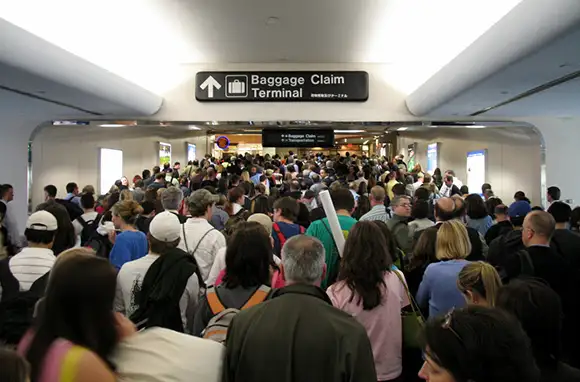
Get to the Airport Early
The day before Thanksgiving. Memorial Day weekend. Christmas week. Some of the busiest travel days are obvious to most avid travelers. However, some aren't so apparent: The busiest travel week a few years ago was the third week in June. In 2016, one of the busiest travel days was May 6 (the Friday before Mother's Day). The takeaway? Don't chance it—get to the airport very early. Lines could be much longer than you expect.
Arrive particularly early on holidays, on weekends, and during much of the summer, and don't underestimate the travel rush on so-called "minor holidays," like Mother's Day. (No offense, mom!)
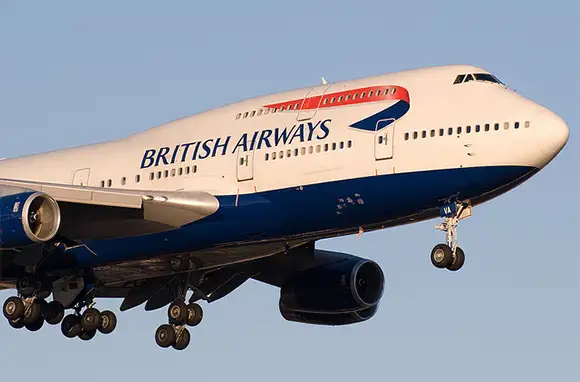
Don't Depart from the U.K. (Unless You Absolutely Have To)
This is one gouge even the airlines don't like—mainly because they don't get to keep any of it. The Air Passenger Duty (APD) applies to flights departing from U.K. airports. It was sold to the British public as a "green" incentive that would help alleviate the carbon pollution of air travel.
The duty has escalated to a healthy hit on tourists returning from a British airport to the U.S. or Canada: £69 (about $113) in economy class, and double that in any higher classes, including premium economy. The duty also applies to award tickets. Rates are lower for flights within the U.K. and for short hops to Western Europe (£13) and higher to Asia and the South Pacific. Northern Ireland opted to reduce the duty to zero on direct flights to the U.S. or Canada.
Work-Around: On a multi-country trip, avoid returning from a U.K. airport if you can. Or consider ending your U.K. trip by taking easyJet to Amsterdam or Eurostar to Brussels or Paris and returning from there.
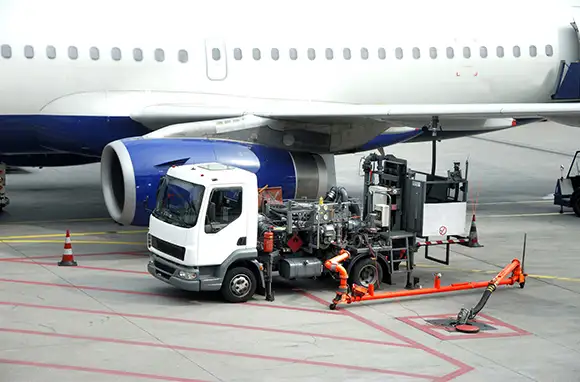
Avoid Phony Fuel Surcharges on International Flights
If you thought that the Department of Transportation (DOT) rules requiring all-up price advertising ended the fuel-surcharge gouge, you're mistaken. Yes, in the U.S., airfare displays no longer break the true fares into separate but equally phony components, but some airlines (especially foreign carriers) retain the distinction in their internal breakdowns and hit you with fees in these unexpected ways:
- They offer a "free" companion ticket that covers only the lowball, fake base fare and leaves you to pay the surcharge.
- Their exchange rules say that you can exchange the base fare but not the surcharge.
- They apply surcharges to "free" frequent-flyer award tickets.
This rip-off is especially noxious because it is based on a lie—that the fuel surcharge somehow isn't part of the regular fare. How bad it is? Recently, British Airways posted a round-trip from Boston to London with a base fare of $208, plus $230 in government/airport/security taxes and fees and a $458 "carrier imposed" (read: "fuel") surcharge. Ridiculous!
If fuel costs were to go down from the present costs to the 2002 level of 69 cents, do you really think that British Airways would charge only $208 for a round-trip to London?
Work-Around: Most U.S. airlines don't use the fuel-surcharge scam. Avoid the foreign lines that do.
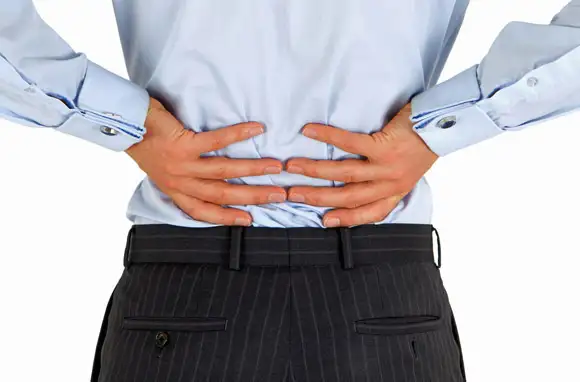
Add Lumbar Support
If humans were shaped like shrimp, the C-shape of most airline seats would be super comfortable. Since we're not, passengers regularly stumble off the plane with achy backs, necks, and legs. Sitting for long periods is already hard on your back, and without lumbar support, your spine and the muscles in your lower back have to work even harder to maintain healthy alignment. Counteract the crush by wedging a blanket, scarf, or rolled-up sweater behind you to allow your lower back to maintain its natural curve.
Adapted from the story 10 Tricks to Make Coach Class Comfier by Christine Sarkis. Follow Christine on Google+.
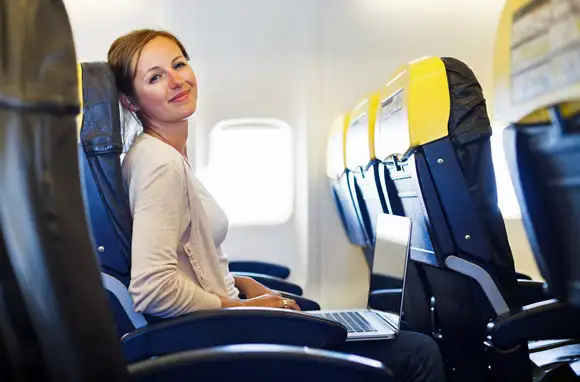
Stuck in the Middle Seat? Claim the Armrests
Even if you're sandwiched between fellow passengers, your personal space needn't be too limited. Board quickly at your first opportunity so as to make it to your seat before your seatmates, and then mark the armrests as your own.
Don't feel guilty: It's widely accepted that the middle passenger gets both armrests. But it's important to claim them early, lest you find yourself next to a passenger who doesn't buy into common courtesy.
Adapted from the story Nine Tips for Surviving the Middle Seat by Patricia Magana. Follow Patricia on Google+.
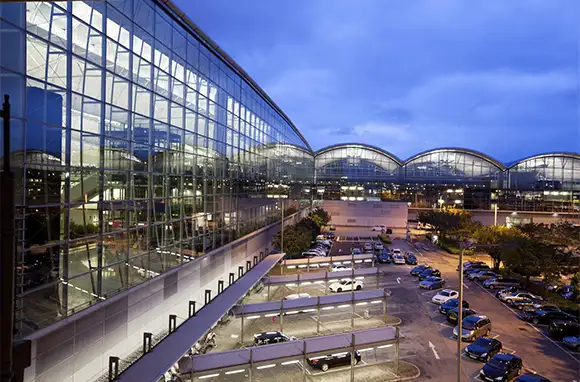
Steer Clear of High Airport Parking Rates
Airport parking rates can be very high. In Boston, for example, supposed "economy" rates are about $120 for a week. Rates don't have to be that high: At busy Charlotte Douglas International Airport, the long-term rate is just a fraction of Boston's rate. But parking is one of the primary cash cows for big airports. Airports typically contract with private operators that, in effect, return more than 95 percent of the revenues to airport coffers.
Work-Around: You can avoid gouged parking rates in several ways:
- Leave your car home and take shuttles to and from the airport, or have someone transport you.
- Use private off-airport parking lots; you can find them around most big airports. Typically, however, they fine-tune their rates so as to be just enough below the airport's rates to generate the business they need.
- Many airport-area motels offer "park-sleep-fly" deals: Pay for one night and get "free" parking at the motel for as long as two weeks. You can take the night at either end of your trip. Rates are generally a few dollars higher than the motel's lowest, but this can still be a good deal.
- Fly from a nearby airport with lower rates. You can escape Boston's rates by flying from Manchester or Providence.
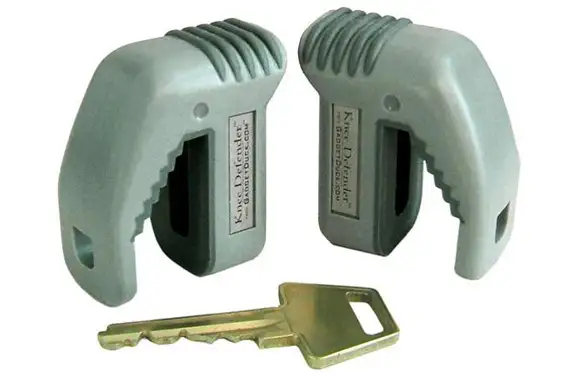
Defend Your Legroom
If you value your legroom enough to fight for it, buy a Knee Defender ($19.95) to ward off encroachment from reclining seats. This pocket-sized plastic device locks onto your tray table and prevents the seat in front of you from reclining. It won't win you any friends, but it is approved by the FAA for in-flight use.
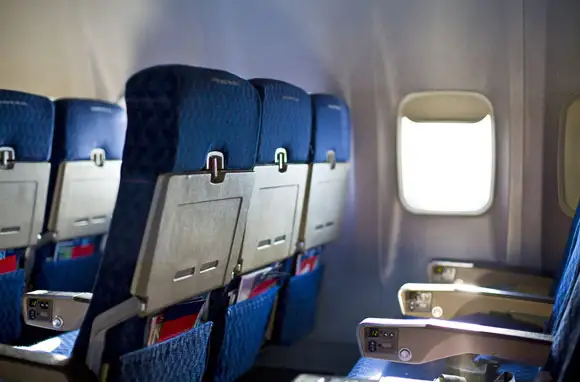
Pad the Armrest
Draping a folded scarf or sweater over your armrest adds just enough padding to boost the comfort quotient from ouch to ahhh. Found yourself in the middle seat? In the competitive real-estate market on planes, nothing says "mine" like a draped sweatshirt or scarf over the contested territory.
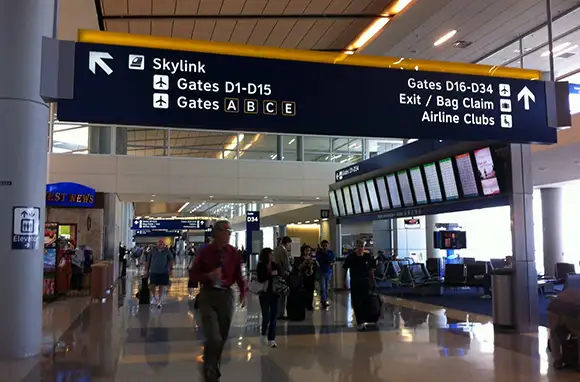
Take a Free Airport Tour
A tour of Zurich International Airport made our list of 10 Surprisingly Cool Airport Attractions; this behind-the-scenes excursion, while indeed cool, isn't free. But a bunch of other airports do offer complimentary tours for travelers passing through.
There are free Terminals to Tarmac Tours at San Diego International Airport and free tours of Singapore that operate out of Changi Airport, and travelers stopping in Salt Lake City International Airport can hop on board a courtesy van for no-cost tours of Temple Square.
Additionally, Turkish Airlines offers free Istanbul tours for flyers stopping in Istanbul Ataturk Airport, but you must be traveling on that airline to be eligible.
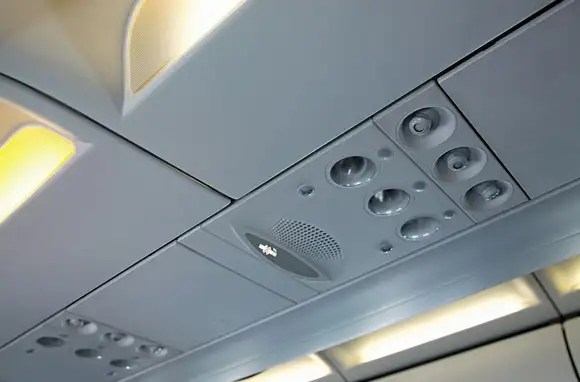
Adjust the Air Vents to Protect Yourself from Germs
When you take your seat on the plane, make a habit of adjusting the air vents. To get that Goldilocks sweet spot (not too hot, not too cold), open the air vent about halfway, and then position it so it blows right in front of you but not on you. Not only will you boost circulation in your personal zone, which can counteract that stuffy plane feeling, but some experts suggest that you may also be protecting yourself from germs.

Take a Layover Tour
A long layover doesn't have to be an exercise in boredom. Get more from your extended stay by escaping the airport and checking out a new destination with a stopover tour. Some are free.
Make the most of your layover in Iceland by booking one of Icelandair's tours, including a transfer to the Blue Lagoon between flights. See Dubai without having to pay for a visa with Emirates' stopover offer, which includes a free visa for a one-night stay. Get to the Eiffel Tower, even if you only have seven hours at Paris' Charles de Gaulle Airport, by booking the Paris Transit Tour from Aeroports de Paris.
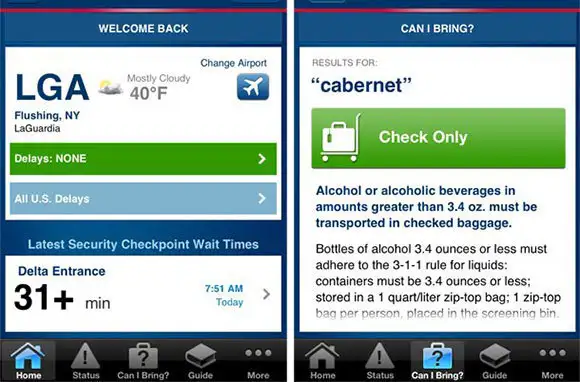
Download This App: My TSA
Can you pack a pocketknife, disposable lighter, or blueberry pie in your carry-on? Which airports use TSA PreCheck? What is TSA PreCheck? Download the Transportation Security Administration's award-winning My TSA app and you'll never wonder about the vagaries of the 3-1-1 rule again.
Additionally, the app provides general information found on the TSA's website, including your airport's on-time performance, its weather, and up-to-the-minute flight delay information.
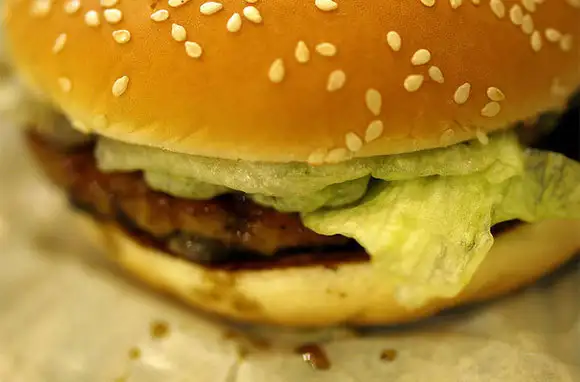
Avoid Junk Food Before and During Your Flight
Airport concourses are lined with unhealthy eating options engineered to tempt fatigued flyers with the promise of salty, greasy comfort food. Onboard, candy and salty snacks are sometimes the only offerings.
It's a bleak landscape of on-the-fly eating and one that can lead to dehydration, jet bloat (pressurization causes cabin air to expand inside and outside your body), and digestive problems that can dog you for days after arrival.
Seek out healthier snacks and meals (or bring your own from home) and you won't kick off your vacation with a junk-food hangover.
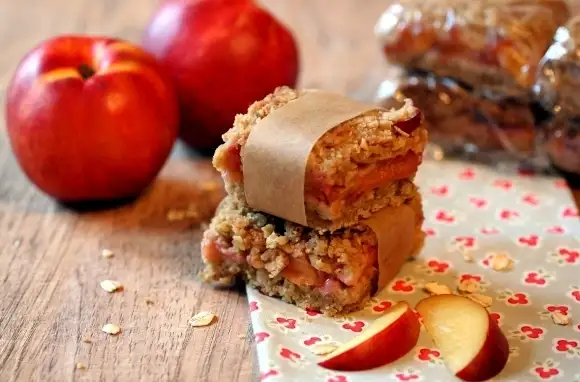
Bring Your Own (Super Tasty) Carry-on Snacks
You know the old saying, "If you want something done right, do it yourself"? That certainly applies to in-flight food. Leave your meal options up to airlines and airports and you'll likely become victim to tasteless, overpriced fare. So why risk the disappointment and insult? Pack your own homemade snacks instead.
We love this TSA-friendly recipe for stone-fruit oatmeal squares. Filled with natural fruit flavors but not overly sweet, they can serve as a quick afternoon snack or ready-to-go breakfast treat for an early-morning flight. Even better, they can be baked and frozen in advance so you won't have to scramble to prep right before you depart. Just take one or two out of the freezer as you head to the airport and allow them to thaw on your way. The recipe is also quite versatile. You can use any stone fruits, such as nectarines, peaches, or plums, making the squares especially ideal in summer (though pretty much any fruit, including apples and berries, can be substituted as the seasons change).
Yield: About 9 squares
3 medium nectarines or peaches (or 6 plums), sliced ⅛-inch thick
2 tablespoons granulated sugar
1 cup rolled oats
¾ cup light-brown sugar, lightly packed
1½ cups all-purpose flour
1 teaspoon baking powder
½ teaspoon cinnamon
¼ teaspoon nutmeg
¼ teaspoon salt
1½ sticks cold unsalted butter, cut into small pieces
1 egg
1 teaspoon vanilla extract
- Preheat oven to 375°F.
- Grease an 8 x 8-inch baking pan.
- In a small bowl, toss fruit slices with granulated sugar. Let sit for at least 15 minutes, then drain.
- In a large bowl, mix oats, brown sugar, flour, baking powder, cinnamon, nutmeg, and salt. Cut in butter with a pastry blender or a large fork, then stir in egg and vanilla.
- Firmly press half of the crumble mixture into pan. Set remainder aside.
- Layer fruit slices on top of crumble mixture in pan.
- Pour remaining crumble mixture on top of fruit slices and gently press down until even.
- Bake in oven for approximately 30 minutes, rotating pan after 15 minutes, until crumble is golden brown.
- Allow to cool, then cut into squares. Wrap tightly with plastic wrap, then freeze for later use.
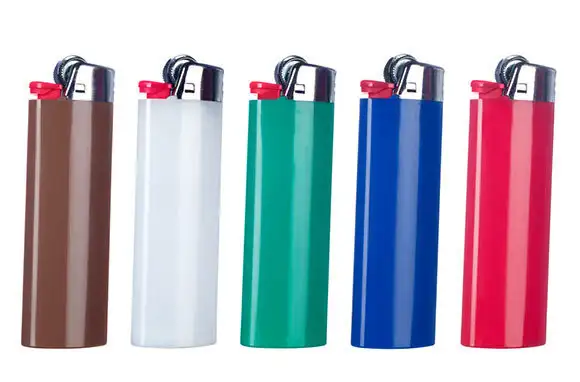
Learn the TSA Rules (Because Sometimes the TSA Forgets)
Standing in the airport security line is stressful enough. But what do you do when the agency entrusted with securing our skies actually forgets its own rules? It happens more often than you might think.
Recently, for example, a nursing mother was told by a TSA agent that she couldn't bring a breast pump with empty milk bottles on board the plane. (Legally, she could.) In 2007, the TSA lifted its ban on regular lighters, but many screeners still confiscate them. (Legally, they can't.) The moral of the story: Familiarize yourself with the TSA's rules and regulations, because you can't necessarily expect your security screener to be well informed.
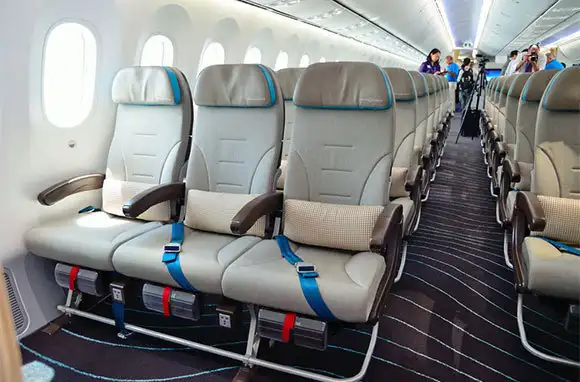
Tight Connection? Choose an Aisle Seat Near the Front
If you know you're facing a tight connection and you've booked your flight in advance, reserve an aisle seat toward the front of the plane. Even if it costs a little extra, it's cheaper than missing your flight.
If you can't get the seat you want online, skip the automated ticket kiosk and instead check in at the counter, where you can explain your situation and ask to be seated near the front. The earlier you arrive at the airport (and the nicer you are when asking for help), the more likely this strategy will have a positive outcome.
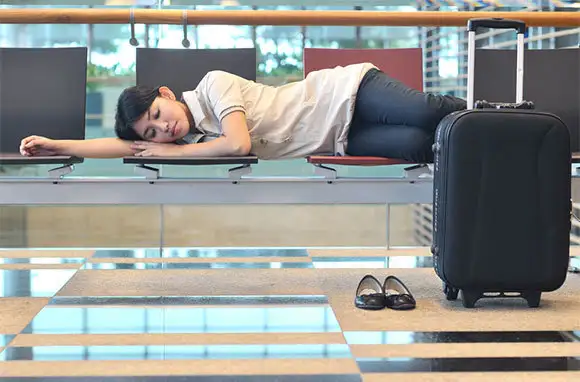
Sleep in Shifts at the Airport
Whether it's due to a long layover or bad weather, or just to save money, sometimes you need to be able to catch a few Z's at the airport. Unfortunately, it's not just a matter of closing your eyes and counting sheep. Sleeping in a high-traffic place like an airport can be tricky and stressful.
If you're traveling with a companion, sleep in shifts. This way, one of you can keep an eye on the bags (and each other) while the other catches some shut-eye. After a predetermined amount of time, switch places. You'll both get the rest and security you need.
Adapted from the story 10 Tips for Sleeping Safely at the Airport by Patricia Magana. Follow Patricia on Google+.
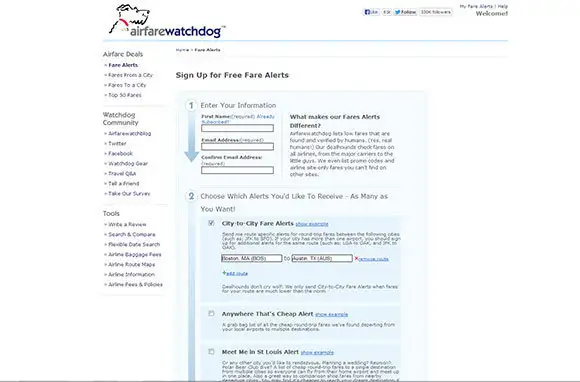
Sign Up for Fare Alerts
Outsource your airfare benchmarking by signing up for alerts that deliver the best current flight deals to your inbox. Customize your route and dates, and you'll be able to keep tabs on price drops and quickly find out when prices are on the rise. Both Kayak and FareCompare offer notifications for specific city combinations and dates. Another handy fare-alert option comes from our sister site, Airfarewatchdog.
Adapted from the story 10 Things You Need to Know About Booking Holiday Flights by Christine Sarkis. Follow Christine on Google+.
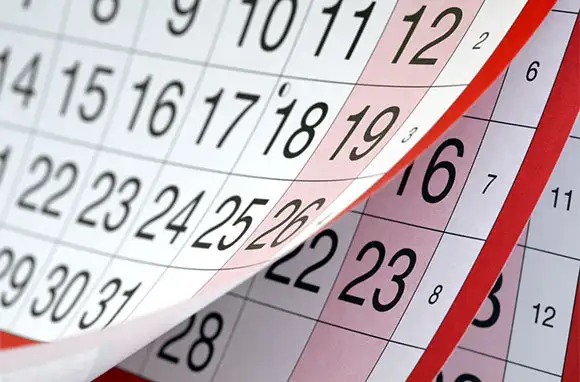
Negotiate Price and Length of Stay When Renting a Vacation Property
On average, travelers save about 30 to 40 percent when booking a vacation rental versus a comparable hotel. So in most cases you're already ahead of the game when you sit down to haggle over price. That's right, haggle. Property owners may not advertise that prices are negotiable, but often they are; and if not price, then at least the length-of-stay requirement may be flexible. A property may say it requires a week's stay, or a Sunday arrival, or any number of other rules. What this really means is the owner would prefer it. It can't hurt to ask, politely, if there's room for negotiation.
Your best bet for flexibility in these areas comes if you book your stay during the shoulder season when the owner might simply be pleased to fill an otherwise-open weekend or midweek-to-midweek slot. The additional savings in that case might be on your flights to and from your destination, because you won't be paying exorbitant weekend fares to get there and back.
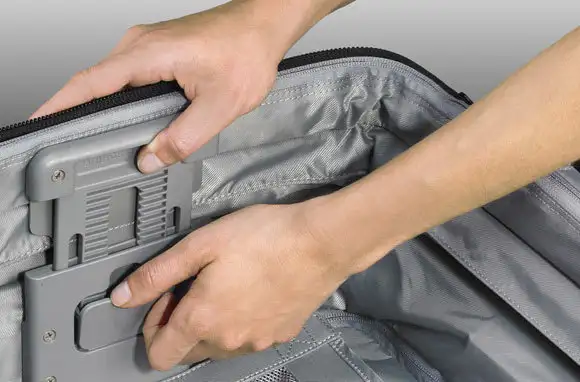
Buy an Expandable Bag
The best way to fit more into your bag is to have a suitcase that grows with your packing needs. Expandable suitcases double as two bags in one, often starting out carry-on size but expanding to a larger bag when needed. We love the Briggs & Riley Baseline Domestic Carry-On Expandable Upright, which grows by 25 percent with the pull of a lever. If you're packing for a big trip (or need extra souvenir space on a return flight), simply expand the suitcase.
Adapted from the story Seven Ways to Fit More Stuff in Your Suitcase by Caroline Morse. Follow Caroline on Google+.
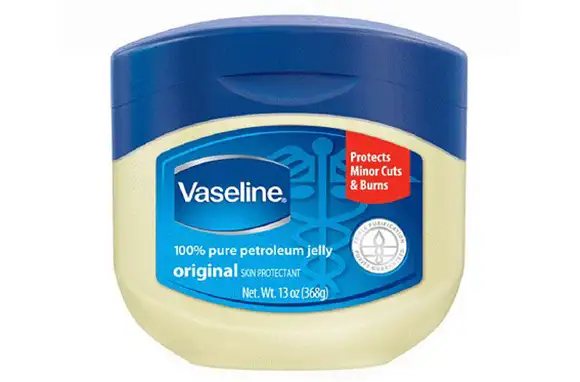
Remove Makeup with Petroleum Jelly
Petroleum jelly helps to keep skin and lips moisturized and can help prevent chafing, too. But did you know it also doubles as an effective makeup remover? Dab some on a tissue to wipe off makeup—just be careful not to get it in your eyes.
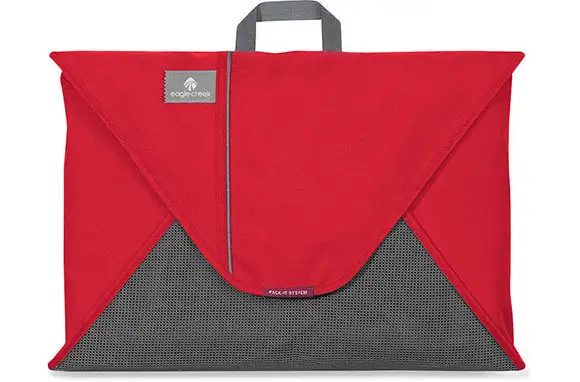
Use Packing Folders
An alternative to space-saving bags and packing cubes, packing folders are pretty much what the name implies: folders for your clothing. They usually come with boards, which help you fold your clothing efficiently and compact multiple items to save space. Check out the product video for Eagle Creek's Pack-It Folder 18 to see how it works. The 18-inch folder holds eight to 12 items, including bulkier garments. Your bag will be neater and seem emptier!

Roll, Don't Fold, Your Clothes
It may seem as if everyone from flight attendants to military members knows this trick, but it bears repeating for the uninitiated: Rolling your clothes is the best way to fit the most in a suitcase. Plus, rolled clothes tend to wrinkle less than folded clothes.
Adapted from the story Seven Ways to Fit More Stuff in Your Suitcase by Caroline Morse. Follow Caroline on Google+.
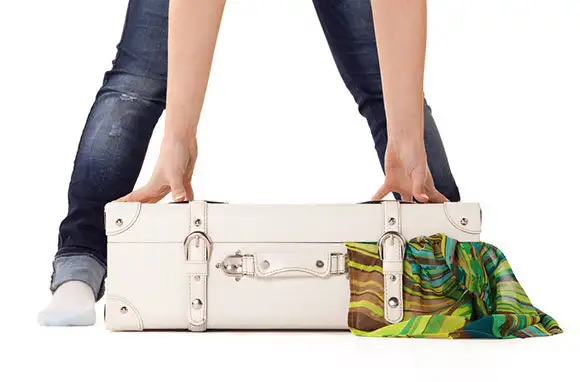
Zip and Then Add Extras
Have a few overflow items that just don't seem like they'll fit? Try closing and zipping your suitcase completely (even if you have to sit on it to make it work). Then reopen your bag and try adding the items in any available spot (think corners, spaces between larger items, etc.). Often, once you've compressed the bag by zipping it shut, you'll find just a bit more room once you open it again.
Adapted from the story Seven Ways to Fit More Stuff in Your Suitcase by Caroline Morse. Follow Caroline on Google+.
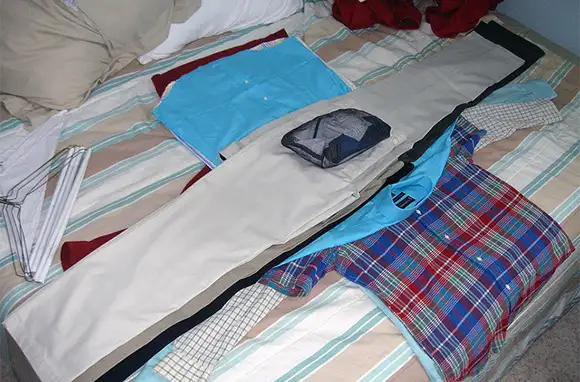
Employ the Bundle Packing Method
Fit more in your luggage and avoid folds, creases, and wrinkles by employing the "Bundle Wrapping" method from OneBag.com. This packing strategy involves filling a small pouch with soft items (like socks, underwear, etc.) and then wrapping larger clothing items around the pouch to form a bundle. (Click here to see a helpful diagram of the Bundle Wrapping method.)
Adapted from the story Seven Ways to Fit More Stuff in Your Suitcase by Caroline Morse. Follow Caroline on Google+.
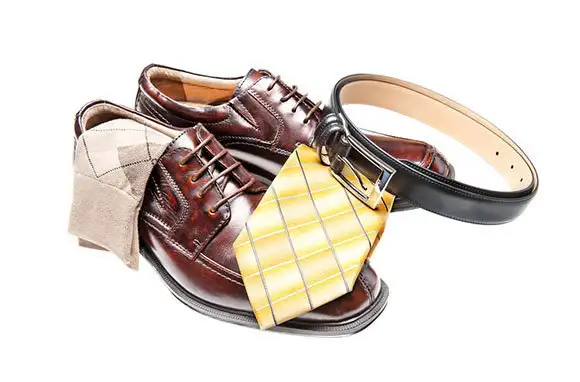
Stuff Things Inside Your Shoes
Shoes take up a lot of space inside a suitcase. Make them do double duty by stuffing them full of small items like jewelry (in a zip-lock bag), ties (rolled up), or socks and underwear (in a plastic bag). Pack your shoes on their sides to maximize space.
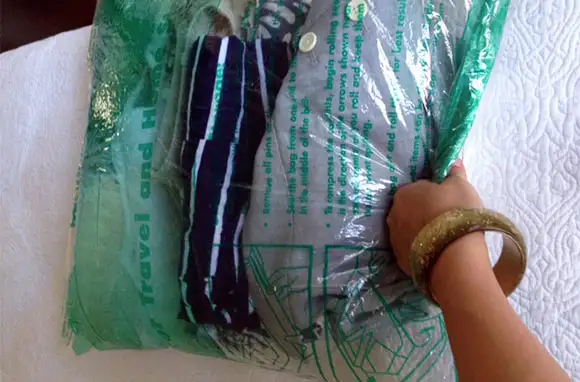
Save Room with Travel Space Bags
You've probably seen the infomercials for the magical space-saving bags that can shrink bulky clothing (like sweaters and jackets) into a small, compact unit. Get the travel version of these bags and you'll save space and keep your clothes organized and wrinkle-free. These Travel Space Bags don't need a vacuum to operate. Normal zip-lock bags in various sizes can also be used to achieve a similar effect for much less money.
Adapted from the story Seven Ways to Fit More Stuff in Your Suitcase by Caroline Morse. Follow Caroline on Google+.
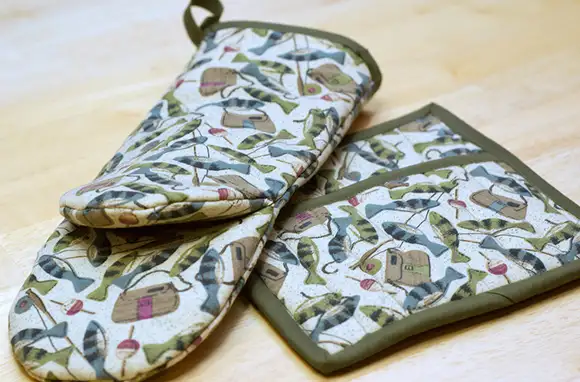
Wrap Your Curling Iron in an Oven Mitt
When using hot tools on your hair minutes before you need to run out the door, you can stuff your still-warm straightener or curling iron into your bag—without burning anything in your suitcase—by wrapping it in an oven mitt. A nicely padded oven mitt will also prevent your hair tools from damage while traveling.
Adapted from the story 13 Travel Uses for Common Household Items by Caroline Costello. Follow Caroline on Google+.

Wear Breathable Fabrics on the Plane
Maintain your in-flight comfort and cleanliness by wearing breathable fabrics (materials that allow air and moisture to pass through them) such as cotton, silk, or linen. Fabrics that don't allow air to circulate will hold sweat on the skin, likely making you feel dirtier faster and probably necessitating a good spin in the washing machine upon landing. Natural fabrics are great, but moisture-wicking manmade fabrics are suitable options as well.
Adapted from the story Seven Things You Should Always Wear on a Plane by Caroline Costello. Follow Caroline on Google+.

Separate Dirty Clothes with a Pillow Case
While traveling, separate dirty clothes from clean clothes with a pillow case, which makes a perfectly packable dirty-laundry bag. Pillow cases work well to keep luggage organized, too. Keep socks and underwear together in a pillow case in your suitcase, which you can reuse as a laundry bag once you arrive in your destination.
A pillow case is also a good tool with which to wrap the breakable souvenirs you pick up on your travels.
Adapted from the story 13 Travel Uses for Common Household Items by Caroline Costello. Follow Caroline on Google+.

Substitute Baby Shampoo for Laundry Detergent
Did you know that baby shampoo can also be used as laundry detergent? We use baby shampoo to wash cashmere sweaters in the sink at home—it's as gentle as Woolite on delicate fabrics, but less expensive. Bring a small bottle of baby shampoo with you on the road if you want to leave your travel-sized laundry detergent at home.
Baby shampoo is also commonly used to de-fog goggles. (Rub a dab of shampoo on the clear part of your goggles and then rinse.) You'll get plenty of use out of this affordable, biodegradable product.
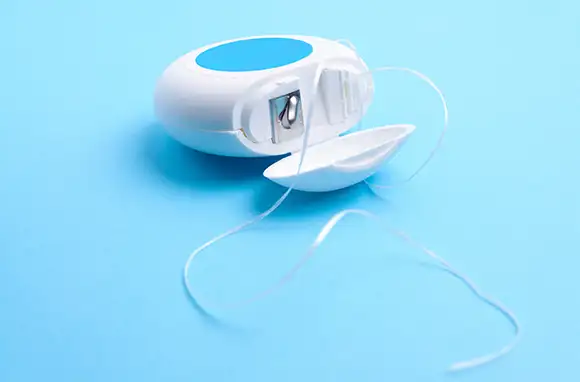
Use Dental Floss as an Emergency Thread
Plagued by torn hems and loose buttons? Oral-B to the rescue! Travelers in need of emergency thread can use dental floss as a substitute. It may not be as durable as some threads, but it works in a pinch. And it's a step up from covering the hole in your pants with duct tape.

String Necklaces Through Straws to Prevent Tangling
String necklaces through straws and fasten them so they don't get tangled. Simply put one side through a drinking straw and refasten it around the straw, and then you can place all of them in a zipped bag. No more untangling chains!
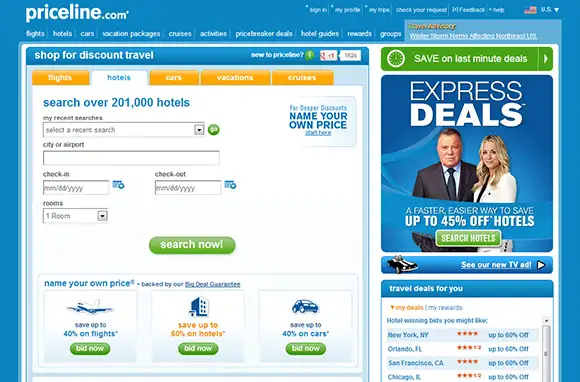
Go For Opaque
By far the best way to enjoy maximum value in hotel accommodations and rental cars is to buy through one of the opaque agencies, where you either "bid" on a room or car or accept a price "blind" without knowing the hotel or rental company until after you make a nonrefundable purchase. The two biggest opaque agencies are Priceline (bid) and Hotwire (blind price), but several other OTAs now offer opaque options.
You can pretty much get what you want by limiting hotel choices by star ratings and, in big cities, neighborhoods. The prices can be as much as 50 percent off. Opaque agencies also sell airfare, but prices aren't much better and the loss of flexibility is an important factor.

Remove Static with Dryer Sheets
Stick a few dryer sheets in your luggage. They take up next-to-no space, and you can use them for a range of purposes. Stuff them in your shoes or dirty-laundry bag to keep odors at bay. And use dryer sheets, which contain chemicals that help prevent static cling, to remove static from clothes and hair—just rub them on whatever needs fixing.

Organize Jewelry with an Egg Carton
Transform an empty egg carton, with its neat set of six or twelve small, separate compartments, into a packable jewelry organizer. The carton will look unappealing to thieves and the sticky-fingered TSA agents who get a glimpse of the contents of your suitcase. And best of all, it's free (with purchase of eggs).
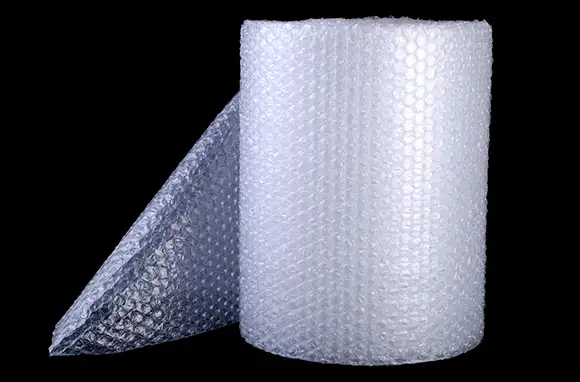
Protect Breakables with Bubble Wrap
When you receive something fragile in the mail, save the bubble wrap. It's perfect for protecting breakables in your luggage, from wine bottles (staple the bubble wrap around the bottle) to snow-globe souvenirs. Packing apples or pears for a snack on the plane? Fold them in bubble wrap to prevent bruising. A stapled sleeve of bubble wrap also makes a suitable iPad or iPhone protector.

Wrap Your Clothes in Tissue Paper
There's a reason employees at so many clothing retailers fold just-bought clothes in tissue paper. The lightweight stuff protects garments and helps prevent wrinkles. Wrap your clothes in tissue paper to keep them free of unwanted rumples when packing. (We also recommend using tissue paper to fold a suit.) Additionally, use balled-up tissue paper (or even newspaper) to keep the shape of items like purses, boots, and bras.
Adapted from the story 13 Travel Uses for Common Household Items by Caroline Costello. Follow Caroline on Google+.

Don't Stress About Not Having a Passport
Longing for a long-distance getaway but don't have a passport? You can still jet off to a faraway island overseas. Consider Puerto Rico, officially an unincorporated territory of the United States; the U.S. Virgin Islands, mere minutes from Puerto Rico by plane; Northern Mariana Islands, a collection of Micronesian islands governed by the United States since the Battle of Saipan in 1944; Guam, which is home to a heavy U.S. military presence; and American Samoa, a collection of five volcanic islands and two atolls between Fiji and the Cook Islands.
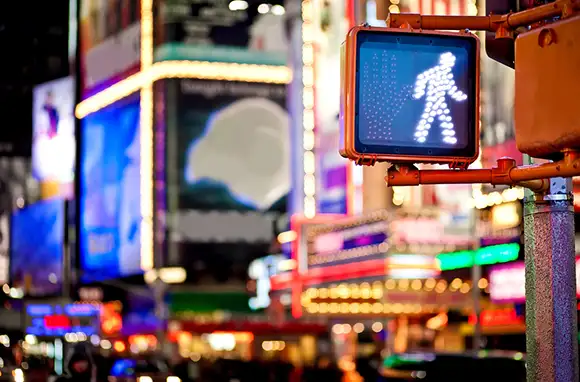
Walk Everywhere
Many of our favorite places are best traversed on foot. Skip the expensive sightseeing trolley and instead sign up for a group walking tour in your destination. If you're wary of being led around a tourist trap by someone in cheesy colonial garb, don't worry: Many destinations offer innumerable walking tours for every type of traveler, from the art buff to the culinary enthusiast. (Plus, a brisk walk between neighborhood nibbles almost outweighs the calories—we hope.)
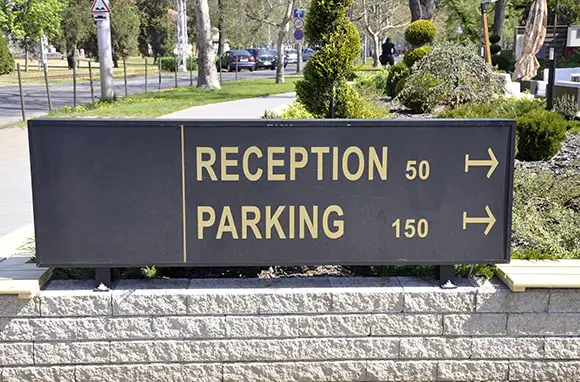
Beware of Surprise Parking Fees at Suburban Hotels
No one expects free parking at a hotel in Midtown Manhattan, the Chicago Loop, or San Francisco's Union Square. But at a suburban low-rise hotel surrounded by a large parking lot, you don't expect to pay extra. Unfortunately, sometimes you do. We've encountered pay parking lots at suburban hotels in several areas; you probably have as well.
Work-Around: Theoretically, you can check ahead and find a place that doesn't charge. But finding out about the parking charge isn't always easy. In our experience, hotels sometimes don't show parking charges on their websites. The best solution is often to check the hotel listing on an OTA such as Expedia or Hotels.com, regardless of where you made the reservation, because those sites may offer additional information.

Consider a Text Package
One or two text messages from the road might be all you need to use during your trip. You might want to text your family to let them know you've arrived safely, text your pet or house sitter, or send a cheery text from the beach to make a friend jealous. Sound good? Then purchase a text package before you leave. For example, AT&T offers Global Messaging Packages for more than 150 countries. Messages received are deducted from your domestic plan.

Book Your European Rental Car from a U.S. Company
Decades ago, before the Internet, one of the standard tips for travelers visiting Europe went this way: If you find you need to rent a car after you arrive in Europe, don't pay the high local rates. Instead, call the rental-car company's U.S. office and rent at the much lower rate quoted to U.S. travelers. Surprisingly, this recommendation is still valid. Book your car rental from a U.S. website to pay about half the local quote.
Work-Around: If you unexpectedly decide to rent a car in Europe, use your laptop, notebook, tablet, or smartphone to book your rental through a U.S. website. Just make sure you reach a U.S. website; often, when you go online overseas, the default site that appears is the local version of a company's website. If access to a U.S. site seems blocked, try a Canadian site.

Watch Your Language
You may think you're in the clear for communicating if you're visiting another English-speaking country, but think again. Certain words could cause you embarrassment across the pond or down under. Avoid words like "pants" (it means "underwear" in the U.K.), "fanny" (slang for a part of the female anatomy, and we're not talking about the rear end), and "pissed" (hint: to the Brits and Irish, it doesn't mean you're angry).

Get Around the Extra-Driver Car-Rental Charge
Having your spouse or traveling companion take the wheel during a long drive seems like simple good sense, and it's often a virtual necessity. As long as all drivers are qualified, swapping the driving duties doesn't add even a fraction of a penny to the rental company's cost or risk. But that doesn't stop those companies from hitting you with an extra-driver charge of up to $13 per day, per driver, sometimes with a minimum charge of more than $90 per driver.
Work-Around: California prohibits extra-driver charges, and New York caps them at $3 per day. In other states, Alamo, Avis, Budget, Enterprise, Hertz, and National waive the fee for a spouse/partner on rentals by members of their frequent-renter programs; some also waive the fee for business associates. Just join the rental company's program before you pick up the car; there's no fee to enroll.

Use Hair Spray for Self-Defense
If you are concerned about safety while traveling but don't own pepper spray (or are in a destination where pepper spray is illegal), we have two words: Aqua Net. Anyone who has ever accidentally sprayed an aerosol hair spray in a confined space knows that it's just as painfully effective as pepper spray.
Carry a small bottle in your purse if you're traveling alone or are in a questionable area; if the bottle is less than 3.4 ounces, you can even pack it in a carry-on bag.

Dodge the Rental-Car Fueling Gouge
Most rental companies give you three options for fuel: (1) Buy a full tank when you rent the car, (2) have the rental company refuel it when you return it, or (3) return it with a full tank. The first two options are complete rip-offs.
When you buy the full tank, the price may be close to the going rates locally, but that's not the gouge. The gouge is that you get no credit for whatever fuel remains in the tank when you return the car. Instead, you donate it to the rental company. So unless Avis, Hertz, or Enterprise is your favorite charity, this option is a nonstarter. And when a rental company fills the car, it typically charges two to three times the local price per gallon (or liter).
Work-Around: The obvious work-around is to take the third option and fill up the tank just before you return the car. This means checking out available filling stations near the airport when you first rent your car so you'll know where to get a refill. Be sure to get a receipt to prove that you filled the tank.
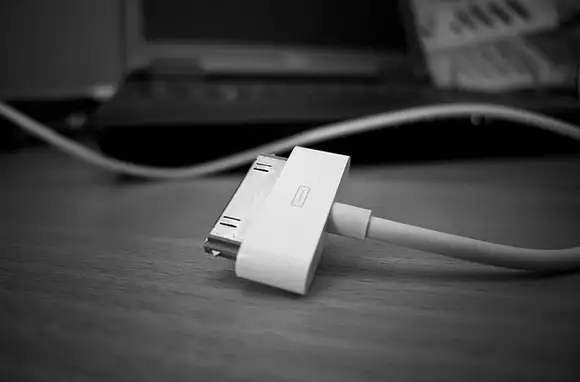
Ask for a Free Phone Charger
Just landed, only to realize you forgot to pack your phone charger? Don't run out to replace it just yet. The number-one most-common item left behind in hotels is the phone charger. So before you buy another, check with the hotel's front desk for a spare.
And if you forgot your copy of Fifty Shades of Grey, don't steel yourself for disappointment. Budget chain Travelodge reports that they recovered 7,000-some left-behind copies last year, making it the most popular book abandoned in hotel rooms … although whether you want to request it from the lost and found is up to you.

Stock Up on Samples
This is one of our favorite ways to cut down on travel product overload: Stock up on tiny product samples. The best sample-sized products are the ones that come in flat little packets; you can easily fit legions of these into a quart-sized zip-top bag. How do you score them? A number of beauty and skin-care companies sweeten their sales with freebies: Sephora, Aveda, and Smashbox, for example, throw in tiny travel-sized products with orders. Or you can sign up for a beauty-product sampling service, such as Birchbox or Glossybox, which ships packs of sample-sized products to members who pay a subscription fee.

Pick a Color Theme for Your Travel Wardrobe
Even if you don't preplan your outfits when packing, try to pack in a color theme. For example, if you're traveling for a week, you might commit to wearing black, navy, green, and white (and throw in pops of colors with your accessories). This helps cut down on any unnecessary extras that you never end up wearing anyway.
"If it's a longer trip that requires two suitcases," says Shiona Turini of Cosmopolitan, "I always pack evenly between the two (e.g. a black shoe in one and a black shoe in the other). In the event my luggage gets lost, I know that I can survive with one suitcase. It takes more time, but I've heard horror stories of people putting all of their shoes in one bag and the airline losing that piece of luggage."
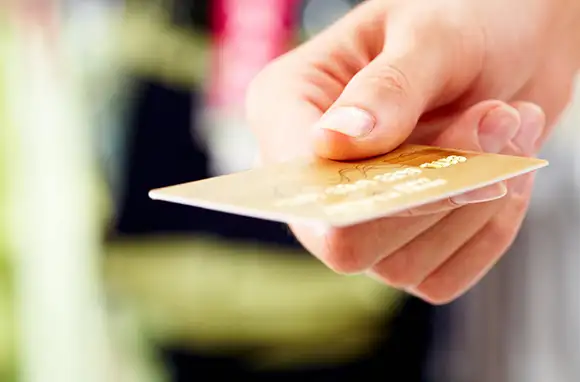
Don't Buy a Prepaid Credit Card
We all want to keep our money secure while traveling. Prepaid credit cards, which are often billed as a safer and more convenient alternative to carrying cash abroad, might seem like a smart option. You purchase a card and load it with funds in your preferred currency ahead of your trip. And if your card gets lost or stolen, you can cancel it immediately. Simple, right? Unfortunately, it's not so simple.
Most prepaid credit cards come with some surprising hidden fees, such as inactivity fees, reloading charges, monthly fees, activation fees, and so on. John Ulzheimer, CEO of SmartCredit.com, told CNNMoney, "Consumers need to realize that any insinuation that a prepaid card is less expensive than a debit card is false, and any claim that it will help you rebuild credit is just a lie."
Ulzheimer also called a prepaid credit card "a gift card with fees." Do yourself a favor and stick with a good-quality credit card.

Know When to Decline Travel Insurance
Travel insurance can be a wise investment. Or it can be a needless expense. Many avid travelers move across the planet without ever even considering purchasing trip insurance. They find travel insurance unnecessary because, often, they're planning budget trips or they don't consider themselves at high risk for cancellation.
To find out whether it's wise to insure your trip, ask yourself some important questions. For example, are you planning an unusually long and expensive journey (such as a honeymoon or a three-week jaunt to Asia)? If you were forced to cancel your trip due to an unforeseen reason, would you be OK with the financial loss?
Furthermore, if you're in a higher-risk situation—if, say, your medical insurance doesn't cover you abroad or you're heading to the Caribbean during hurricane season—travel insurance might be a smart purchase. Otherwise, maybe you're better off pocketing the extra hundred dollars or so and taking your chances on the road. To learn more, read Travel Insurance 101: What to Know Before You Buy.
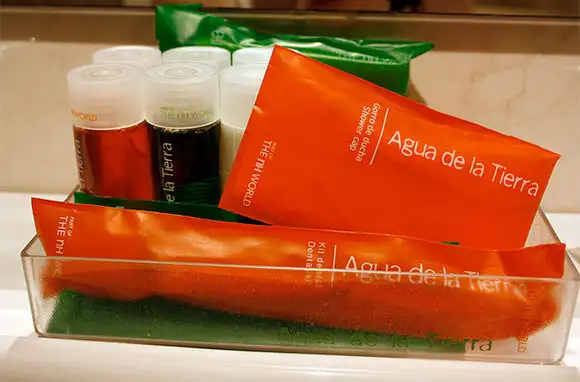
Use Your Shower Cap as a Shoe Cover
Flimsy shower cap or custom shoe cover? You decide. In every suitcase, there's a constant battle between dirty and clean items. Score a victory for fresh-smelling shirts and dirt-free trousers by keeping your shoes contained in a shower cap. Place them in, soles down, and let the shower cap's elastic band cradle the shoes so that any dirt, grease, or unidentified muck stays safely tucked away inside the plastic pouch. Depending on the type and size of your shoes, you may need more than one shower cap, but housekeeping is usually pretty generous with them.
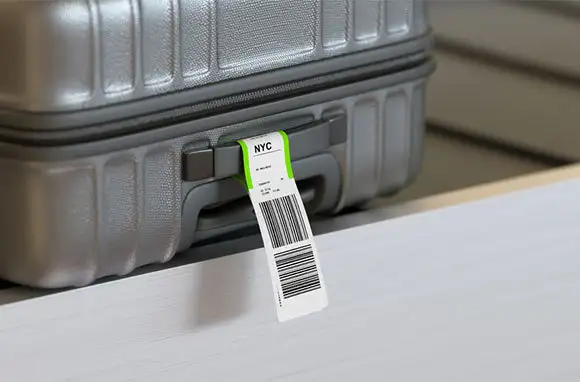
Remove Lint with a Baggage Tag
Didn't bring a lint roller (and don't travel with duct tape)? No problem, you're still likely traveling with an item that can do double duty and help you get out the door fluff-, lint-, and animal-hair-free. Just carefully remove the long baggage-tracking sticker from your suitcase handle, wrap it around your hand with the sticky side facing out, and blot at any area of clothing that needs cleaning.
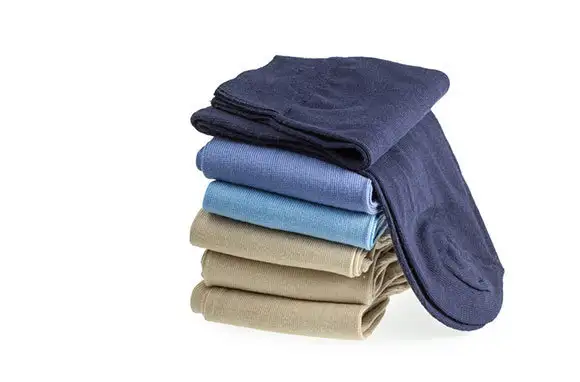
Use Airplane Socks as Scratch Protectors
You know the socks you often get on overseas flights? The ones that don't fit quite right and come with weird treads that make them impossible to wear with shoes? Give them new purpose by keeping a pair on hand to protect items from getting chipped or scratched in transit. They're the perfect size to hold the trinkets you pick up on your travels—the ones that don't need to be enveloped in bubble wrap but do need a bit of extra protection before being tossed into your bag. And in a pinch, they can serve as a handy alternative to a glasses case in your bag or purse.

Get Bite Relief from Bar Soap
Bugs always seem to be on vacation, which explains why so many people return from their travels covered in bites. Spare yourself a trip to the pharmacy and treat an itchy bug bite with a basic bar of soap from your hotel room. Simply wet the bar a bit, rub it on the bite, and let it dry. Some people recommend rubbing the dry bar directly onto the bite, so experiment to see which method offers more itch relief. Take it with you and you'll have the perfect travel-bite remedy, since as a solid, your trusty miniature bar of soap isn't subject to the TSA regulations that itch-relief gels and creams must follow.
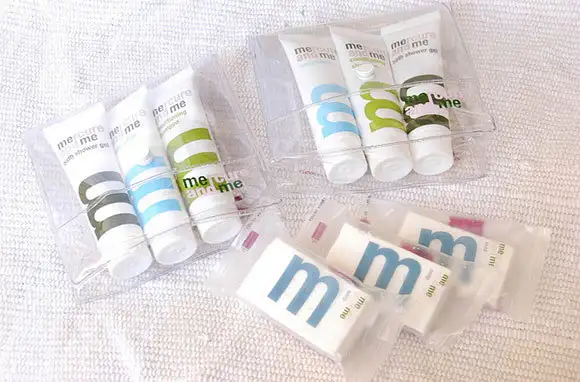
Polish Leather with Shampoo
Travel can be hard on leather shoes, purses, belts, and jackets, so if you find yours looking worse for the wear while you're on the road, turn to your hotel bathroom for a quick fix. Liquid shampoo has an amazing superpower: a small amount, rubbed in circles with a cloth, can clean and restore the rich color of leather. It can also be a handy and quick way to protect leather shoes from winter salt stains.
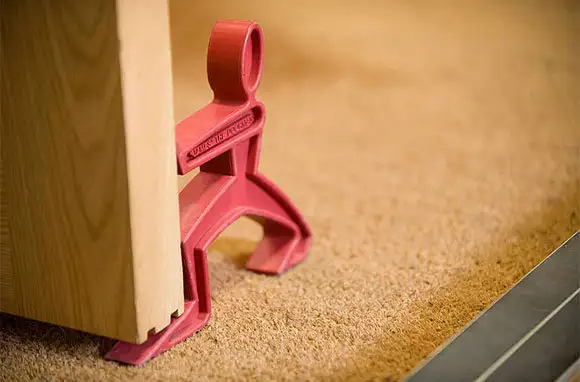
Turn Your Doorstop Into a Security Device
Little rubber doorstops hide out behind hotel-room doors, waiting for fleeting moments of glory. And while the unassuming devices are put there so guests can prop open their doors, they're just as effective at keeping doors shut. So if you want an added level of security when you turn in for the night, wedge the doorstop under the bolted door. Voila, you've just added an additional lock.
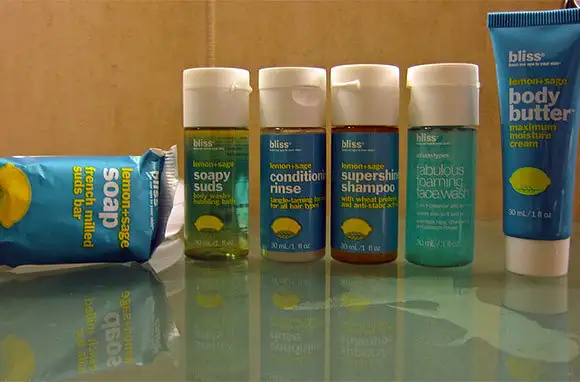
Use Conditioner as Shaving Cream
Based on no scientific data (but plenty of anecdotal proof), we're sure shaving cream is the most-forgotten toiletry in the travel tool kit. Man or woman, you're likely going to need to shave at some point on any trip, so finding yourself without can be problematic. Worse, most hotels don't offer shaving cream in their repertoire of free items. But hair conditioner, which comes standard with nearly all hotel rooms, makes a perfectly acceptable substitute. And it has the added benefit of being moisturizing, so you can be smooth and supple in one easy step.
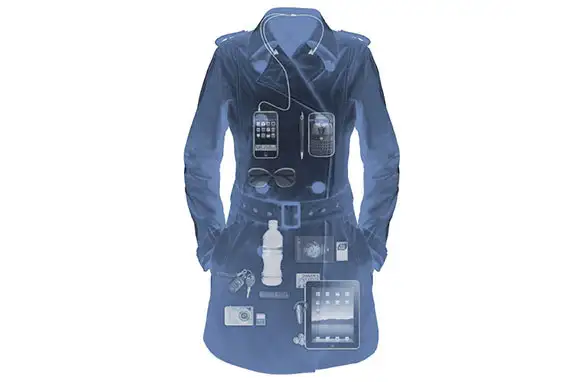
Leave Your Handbag at Home
Walking around with a handbag stinks. You have to worry about pickpockets, your shoulders ache by the end of the day, and you can never find anything in it. But how else are you going to carry around all the stuff you need for the day?
Enter the Scottevest Women's Trench, which allows you to travel purse-free while looking fashionable and non-touristy.
The Scottevest trench coat looks like a normal coat—but it has 18 hidden pockets and a "Weight Management System" with "NoBulge" engineering, which means you won't look like you're trying to smuggle stuff under your coat. The jacket is lightweight and water-resistant.
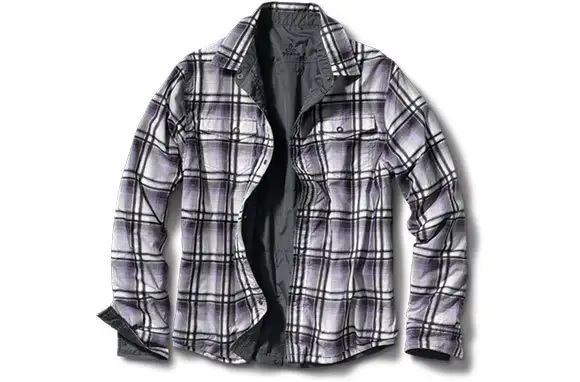
Wear Reversible Clothes
Reversible clothes can add color to your travel wardrobe and give you plenty of options, all in one garment. Look for pieces that have bright patterns on one side and basic neutrals on the other for maximum use. The reversible V-neck pullovers from L.L.Bean are great for winter getaways, while tank tops with neckline options, such as this one from Anthropologie, add versatility (and endless outfit permutations) to an otherwise basic garment. For men, we like this plaid jacket from yoga outfitter Prana.
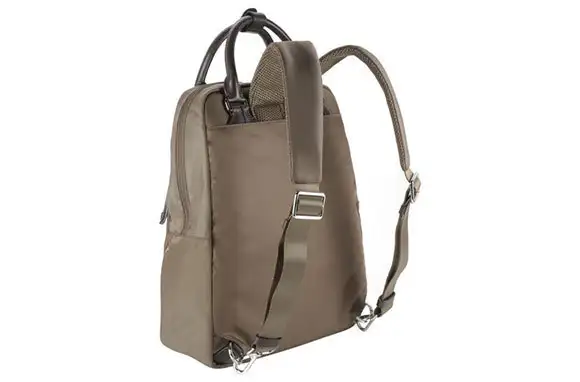
Look for Garments That Perform Double Duty
Smart explorers know that clothes should have more than just aesthetic value, so look for multipurpose pieces to accentuate your basics. Travel outfitters offer lines of vacation-friendly but stylish separates with a whole slew of side benefits, from sun and bug protection to ample hidden storage. Check out this wrap with 30 UPF sun protection from Magellan's and, for men, these sun-blocking T-shirts from TravelSmith (they would make great foundations to any ensemble).
Other smart garments include vests with elaborate hidden storage systems, scarves with savvy pockets, and ExOfficio's insect-repellant button-downs (perfect for a trip that takes you from indoors to out). Convertible bags will also extend your wardrobe and lighten your carry-on load; this option from Tumi converts from a flight-friendly backpack to a tote bag for everyday use.
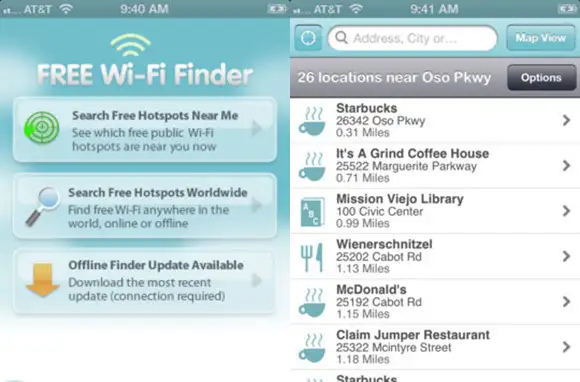
Find Free Wi-Fi (Really)
Paying for Wi-Fi access is every traveler's pet peeve, especially when stuck in an airport on an infinite layover. Never be left analog again: Lifehacker's Definitive Guide to Finding Free Wi-Fi rounds up a number of ways to locate a hot spot free of charge. (Caveat emptor: Some are of questionable legality.)
Our favorite (above-board) tip is to download a program such as NetStumbler, which goes above and beyond your computer's built-in Wi-Fi detector by locating "hidden" Wi-Fi networks your PC might have missed. If you're on a Bluetooth-enabled Mac, iStumbler will provide the same service. Smartphone users can get apps like JiWire's Free Wi-Fi Finder, whose directory tracks the exact location of nearly 150,000 free networks worldwide.
If all else fails, find the inevitable Starbucks. Many locations offer free Wi-Fi (and you can usually perch right outside the entrance and secure a connection).
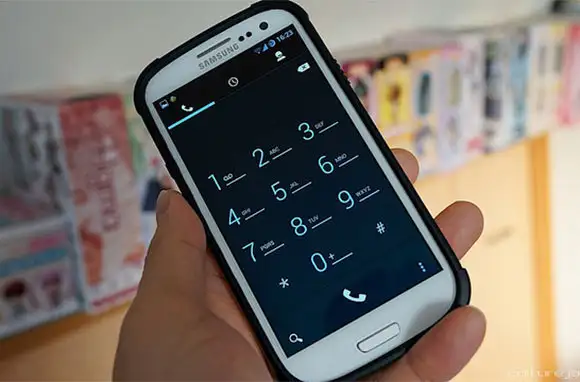
Switch to Wi-Fi Calling
Apps such as Skype, Facebook's Video Calling, and Google Voice will let you make unlimited calls for free as long as you're connected to Wi-Fi.
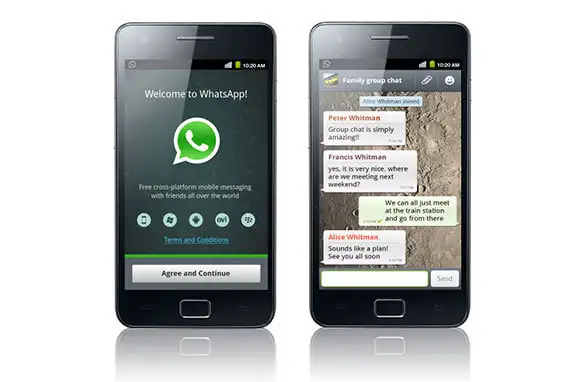
Download Mobile-Messaging Apps
Before you go, download mobile-messaging apps such as WhatsApp, HeyWire, and Kik so you can easily text back and forth with friends at home and new acquaintances abroad for free. You just need to be connected to Wi-Fi to send and receive messages.
Adapted from the story Seven Sneaky Smartphone Hacks You Should Be Using by Caroline Morse. Follow Caroline on Google+.
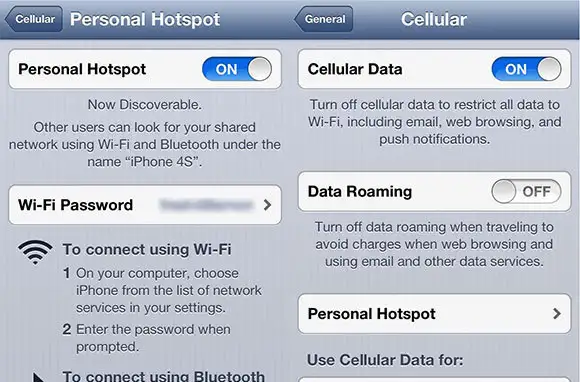
Reset Cellular Usage to Zero
Did you know that your phone keeps track of how much cellular data you've used? If you reset it to zero at the beginning of your trip (here's how), you can easily monitor your usage and see if your phone is sneakily using any data while you're abroad.
Adapted from the story Seven Sneaky Smartphone Hacks You Should Be Using by Caroline Morse. Follow Caroline on Google+.

Pack a Scarf
Scarves are the Swiss Army Knives of travel accessories. A good lightweight scarf can be used to dress up an outfit, as protection from the sun, to cover up bare skin in churches or mosques, or even as a makeshift pillow or eye mask on the plane. Further, if unexpectedly cool weather arrives during your vacation, a scarf will come in handy.
For a warm-weather trip, choose a breathable scarf made of cotton or linen, and seek out something in a neutral color that will go with lots of outfits. You could also try a sarong, which is basically a really big scarf that can be fashioned into a cover-up.
Men wear summer scarves too. Don't believe us? Here's proof. Guys comfortable rocking said accessories can find them at most major department stores.
Adapted from the story 10 Essential Clothing Items for Every Type of Summer Vacation by Caroline Costello. Follow Caroline on Google+.
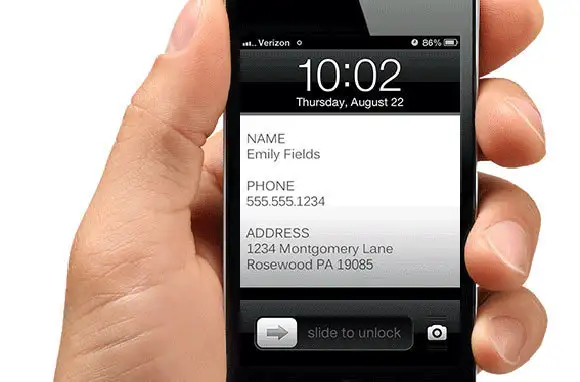
Change Your Phone's Lock Screen
Concerned about losing your phone while on the road? Change your phone's lock screen to an image that displays your emergency contact information, including your email address and an alternate phone number. If your phone is lost or stolen and a Good Samaritan finds it, he or she will easily be able to get in touch with you to return it, even if your phone is locked.
Adapted from the story Seven Sneaky Smartphone Hacks You Should Be Using by Caroline Morse. Follow Caroline on Google+.
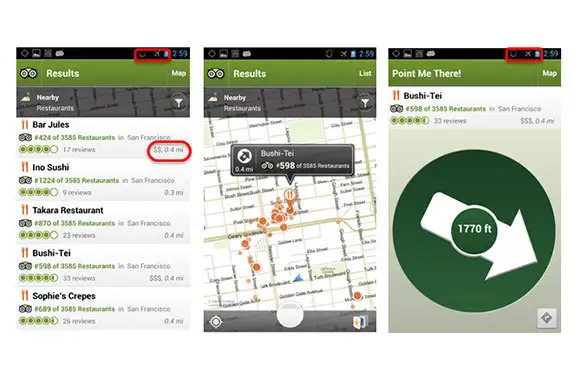
Download Offline Maps Before You Go
Do all of your downloading before you leave your home country. Go for apps that don't need data to be usable, such as TripAdvisor's Offline City Guides, MetrO, and PocketEarth.
Adapted from the story Seven Sneaky Smartphone Hacks You Should Be Using by Caroline Morse. Follow Caroline on Google+.

Turn Off Data
If you don't plan on using data while abroad but plan to pack your phone, there are two steps you need to take before departure: Turn off cellular data and turn off data roaming. You'll find instructions for doing so on an iPhone here, and here for an Android phone. Contact your cellular provider for further details on shutting off data.
Fail to shut down the automatic downloads that bring emails, program updates, meeting notifications, and other data to your phone and you'll likely see some very expensive roaming charges on your bill at the end of the month.
Adapted from the story 10 Ways to Prepare Your Cell Phone for a Trip by Caroline Costello. Follow Caroline on Google+.
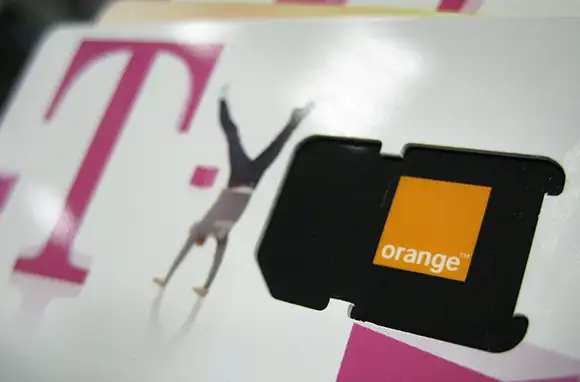
Get a Country-Specific SIM Card
Will you be spending a lot of time in one particular country? A prepaid SIM card for the region you're visiting is an economical choice for overseas phone usage, and it allows you to make calls and use data exactly as many locals do: through a local provider. Switch your SIM card and you'll have a new local phone number and likely an affordable plan that puts scary-expensive international calling packages to shame. You won't be able to make or receive calls via your usual phone number, though.
Here's how to get one: Either pick one up prior to your departure date or get one from a local store after you arrive. We recommend the former, especially for those who don't want to waste precious trip time shopping around for SIM cards. You can order the cards online from companies such as Telestial and Brightroam.
But remember that not all phones will accept new SIM cards. You must have an "unlocked" GSM phone for this to work.
Adapted from the story 10 Ways to Prepare Your Cell Phone for a Trip by Caroline Costello. Follow Caroline on Google+.
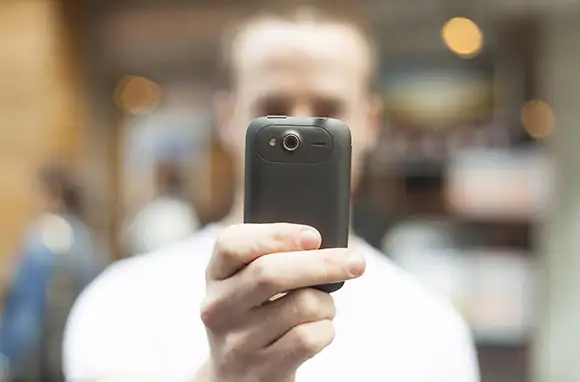
Make a Digital Backup With Your Smartphone
Prepare a digital backup in case your identification gets lost or stolen. With your camera phone, take a photo of your passport or driver's license and email the photo to yourself. You might also want to take a photo of the contents of your checked bag, which may come in handy if the airline loses your luggage. (Use the photo to help document your missing belongings when filling out a claim form.) Throughout your trip, take advantage of the camera on your phone and snap photos of anything that might serve as a helpful reminder, from your airport parking-lot spot to your hotel-room number.

Even if you don't normally use lip balm, it can still be an important item to pack. Breathing dry airplane air, being out in the sun, eating salty foods in transit—travel inevitably leads to mild dehydration and chapped lips. And there's something off-putting and vaguely predatory about constantly licking your lips. Lip balm can also be used to tame frizzy hair ends, soothe dry cuticles, protect skin from windburn, and even unstick a stubborn zipper.
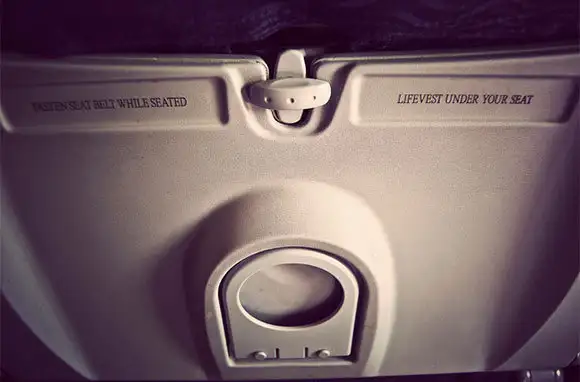
Watch Out for Germs
Even if you're not sitting next to someone who is obviously ill, there's still a good chance that germs from passengers past are lurking in the cabin. Bathroom door handles, arm rests, tray tables, seat-back pockets, and seat-back screen controllers are among the surfaces that get dirty fastest and might not be properly disinfected between flights. Shared airplane blankets and pillows, especially those not sealed in plastic when you board, also tend to be germ factories.
Since nothing ruins a vacation faster than coming down with a cold or the flu, it's key to be vigilant against germy surfaces when you fly. Wash your hands often or use hand sanitizer. (Have mixed feelings about hand sanitizer? The New Yorker recently ran a great story about it.)
Adapted from the story Eight In-Flight Mistakes That Could Ruin Your Trip by Christine Sarkis. Follow Christine on Google+.
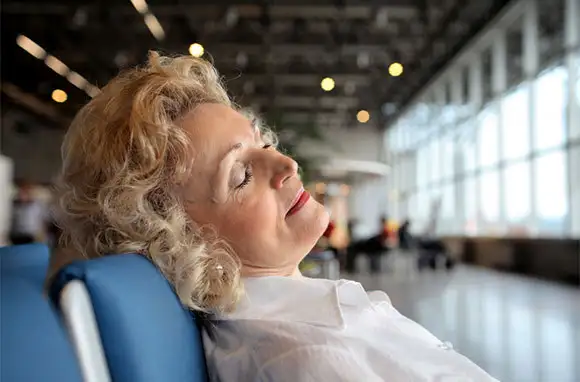
Ease Into a New Time Zone
A popular practice among junk-science enthusiasts, staying up all night before your flight to confuse your internal clock and fight jet lag mostly just makes you more tired and prone to illness and stress. And that sets a bad tone for any trip.
Instead of pulling an all-nighter, aim for good sleep before your trip and use the flight time to ease yourself into the destination's time zone by sleeping and waking according to the clock where you'll land.
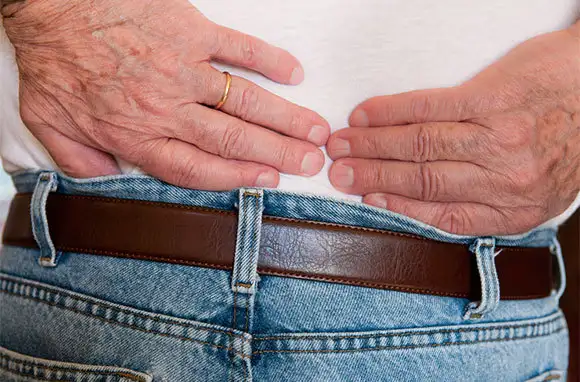
Don't Sit Still
Sitting in an airplane seat is hard on your body. If you're not moving and stretching at regular intervals in-flight, you're putting yourself at risk. Opt to remain in your seat for hours at a time and you'll likely arrive with the aches and pains of tight muscles. More seriously, people who sit still for long periods have a higher likelihood of developing deep vein thrombosis (DVT), a condition in which a blood clot forms, usually in the leg.
DVT causes leg pain, but the real concern is that part of the clot could break off and flow to the heart or brain, causing severe injury or death. In its DVT pamphlet for travelers, the FAA advises airline passengers to increase leg-muscle activity while flying by walking around in the cabin or exercising lower legs and ankles from a seated position.
Adapted from the story Eight In-Flight Mistakes That Could Ruin Your Trip by Christine Sarkis. Follow Christine on Google+.

Decline the Free Car-Rental Upgrade
It's standard practice for major rental-car companies to lure customers with free upgrade offers. For example, a traveler might pay for a four-door car, take advantage of a free-upgrade promotion, and then receive a standard SUV. But if you don't need the extra space afforded by a larger vehicle, an upgrade could be more of a loss than a perk.
Think of the gas costs: Generally, bigger cars get fewer miles to the gallon than smaller, more fuel-efficient models (with the exception, of course, of hybrids). So while the car-rental upgrade is billed as "free," in reality, it's not.
Adapted from the story Travel 'Perks' That Aren't Always as Good as They Sound by Caroline Costello. Follow Caroline on Google+.

Pack Your Batteries Separately
Packing your electric toothbrush or razor? Make sure you either take the batteries out or tape the item's switch in the "off" position. Battery-powered devices can easily turn on after being jostled around in a carry-on, which can in turn draw the attention of security. Play it safe and pack your batteries separately from your battery-powered items.

Buy a Lounge Day Pass
Comfortable chairs and soothing music, plus free snacks, drinks, and Wi-Fi: This is the siren song of the airport lounge. While annual passes to airline and airport lounges tend to be pricey, a day pass can be a worthwhile expense, especially if you've got a long wait or simply want a quiet place to relax before your flight.
As an added stress buster, airline-affiliated lounges usually staff a desk where you can make flight changes without needing to stand in a long line at a customer-service counter. Find out everything you need to know about using airport lounge clubs here.

Pack the Right Shoes
Ever wonder why your bag always seems so heavy by the time you're finished packing? Shoes—especially boots, wedges, and just about any men's work or dress shoe—may be the culprit. And many ultralight options have their drawbacks: There's only so far you can walk in flimsy flats, and lightweight sneakers don't always deliver on the fashion front.
When it comes to shoes, packing light and well is a tricky balancing act between bulk, style, and comfort. Since shoe needs and preferences are highly individual, there's no one-size-fits-all solution, but here are a few hints to point you in the right direction:
- Shop Light: Most shoes were not designed with weight in mind, but shoes sold by travel outfitters tend to be the exception. If you're looking for lightweight options built for comfort, start with a company like Magellan's or TravelSmith. The offerings may not reach any pinnacles of fashion, but there's enough variety that most travelers can find something suitable. And, unlike most online sellers, travel outfitters often list shoe weight in the specs, so you can shop accordingly.
- Determine Scale: The lightest shoes I found online were a pair of 3-oz. foldable ballet flats. However, in women's shoes, most travel-oriented options built for all-day wear weigh in at somewhere between 10 oz. and 1 lb. For comparison, a sample pair of flat boots (women's size 8.5) weighed 2.8 lb., and a pair of wedge sandals (also women's size 8.5) was 1.7 lb.
- Dealing with the Heavy Pair: If you've got a heavier pair you need to bring, let your feet do the heavy lifting and wear them when you're in transit, reserving your suitcase for lighter shoes.
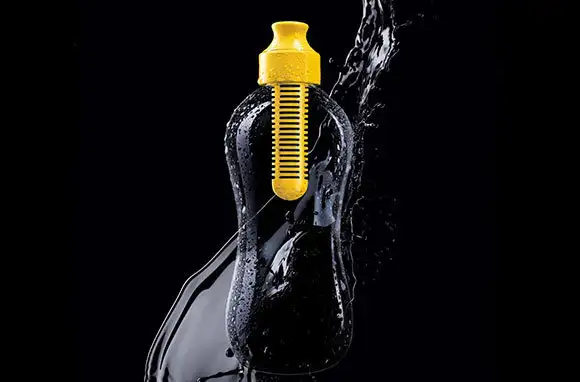
Bring a Refillable Water Bottle
According to the Mayo Clinic, we should all be consuming at least nine cups of water per day to flush toxins out of vital organs, carry nutrients to cells, and replenish the body's natural water supply. And just because you're on vacation doesn't mean all health concerns should get thrown out the sunroof.
Pack a refillable, money-saving water bottle like the Bobble bottle with a built-in filter or Nalgene's bumps-in-the-road-friendly Narrow-Mouth Bottle.

Keep Your Phone Hidden
While there are a great many useful travel apps you can employ for mapping, translation, and general destination overviews, avoid unwanted attention from would-be muggers by keeping your phone out of sight.
Before leaving your accommodations, map out the route to your next destination in your head. If the way is too complicated, write it out on paper. If you prefer a map, circle your destination, fold the map into a small square that fits in one hand, and avoid spreading out the full-sized map before your face (this marks you as a target).
Buy a cheap watch for your trip and use that, instead of a phone, for time-keeping purposes.
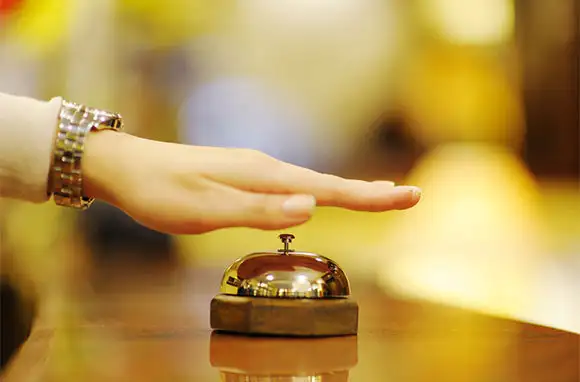
Negotiate Your Hotel Check-In Time
Check-in and checkout times vary by location at hotels. However, there are some similarities among lodgings, with check-in times starting mid-afternoon, usually around 3:00 p.m., and checkout times falling in the late morning, usually at 11:00 a.m. or noon.
At many hotels, check-in and checkout times are far from set in stone. Loyalty members often get the option of early check-in or late checkout, and sometimes hotels offer the option with certain packages or room types. And if you've got a late flight or just need a home base for a few more hours, it never hurts to call the front desk and ask. Often, the hotel will be happy to oblige.
If you arrive early and your room isn't ready, most hotels will store your luggage until you can check in (sometimes for an extra fee). And if you plan on arriving long after the check-in time, it's worth a quick phone call to alert the front desk of your estimated arrival time so they don't think you're a no-show and give away your room.
Adapted from the story When to Book, Fly, and More: Tips for Perfect Travel Timing by Christine Sarkis. Follow Christine on Google+.
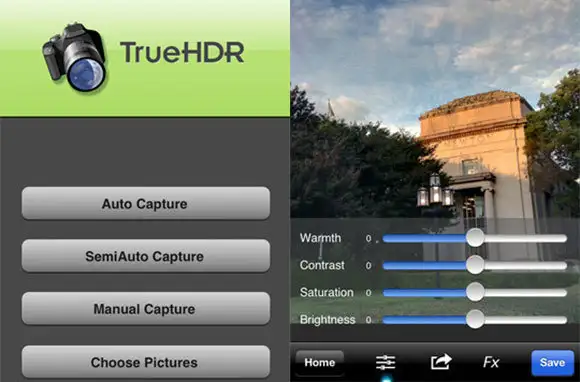
Use An HDR App To Take Better Photos On Your Smartphone
Smartphones are capable of taking good photos, but they do have limitations. For example, smartphones have trouble with high-contrast scenes like sunsets. Use a high dynamic range (HDR) app to combat this.
An HDR app will take two exposures: one for the highlights and another for the shadows. Then it carefully blends them together to create an image much closer to what you see with your eyes. Photographer David Pasillas recommends TrueHDR and Pro HDR.
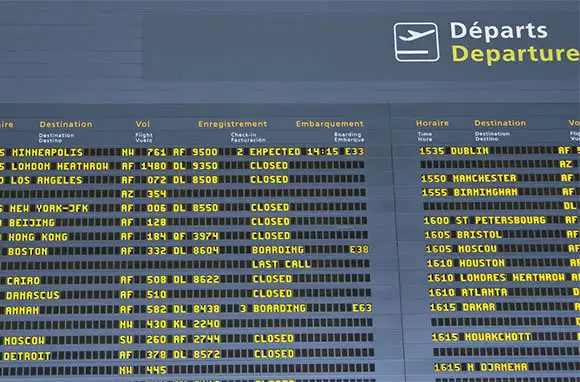
Give Yourself at Least 45 Minutes to Make a Connecting Flight
Trying to make a tight connection between flights is a surefire way to add unnecessary stress (and a possible missed flight) to your journey. And you can't always count on airlines for guidance; their recommended connection-time minimums often leave frequent travelers wondering how anyone could possibly get to another flight in the suggested amount of time.
The amount of time you should allow between connecting flights varies depending on the airport, the airline, and whether or not you'll have to clear customs or go through security to switch terminals. As a general rule of thumb, it's safe to assume that, on domestic connections, anything less than 45 minutes is a bad ideaâand you'll likely be better off doubling that amount of time and scheduling about 90 minutes between flights. For international flights connecting with domestic flights, add enough time to clear customs.
Adapted from the story When to Book, Fly, and More: Tips for Perfect Travel Timing by Christine Sarkis. Follow Christine on Google+.

Avoid Raw Produce in Places with Questionable Water
Fruits and vegetables are great for you, but in places where the water isn't safe to drink, raw produce is best avoided. Crops are often watered with tainted water, and raw ingredients are often cleaned with unsafe tap water. While cooking kills off pathogens, salad ingredients and other raw fruits and vegetables don't have that layer of safety.
In places where the water isn't safe to drink, abide by this rule: Boil it, peel it, cook it—or forget it. Avoid salads and other raw fruits and vegetables, except those that can be peeled (and that aren't then exposed to tap water), since the peel protects against contamination.
Adapted from the story Seven Risky Foods to Avoid While Traveling by Christine Sarkis. Follow Christine on Google+.

Expedite Your Elevator
If you want to upgrade your hotel elevator to VIP status, simply press the desired floor number and the "door close" buttons simultaneously for several seconds. The elevator will override other requests and skip all other floors, whisking you away to your destination and making you feel like a big shot in no time.
Adapted from the story Nine Unusual Travel Tricks That Really Work by Dara Continenza. Follow Dara on Google+.
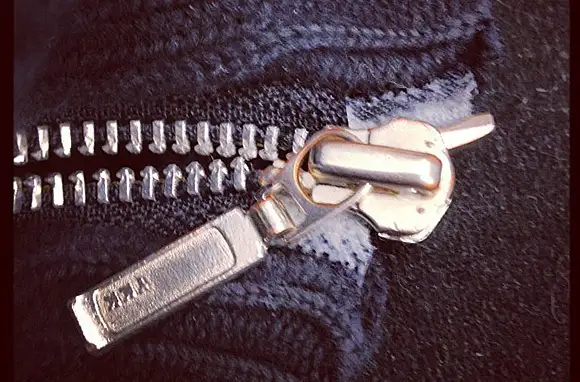
Fix a Broken Suitcase Zipper
It's happened to everyone: Your suitcase zips just fine when you leave, but upon packing for your return trip, it fails to close. Rather than replace your luggage, consider these quick zipper hacks. If the zipper appears to be stuck, rub Vaseline, lip balm, or bar soap on the teeth to get it moving. Zipper teeth no longer staying closed? Usually a single tooth is bent out of shape. Feel along the length of the zipper until you find the one that sticks out, and then a quick adjustment with pliers will do the trick.
And if the zipper handle has snapped off from the slider completely, replace it by looping a souvenir keychain through the slider, creating a makeshift zipper pull. (An eye-catching keychain will also help you identify your bag on the luggage carousel.)
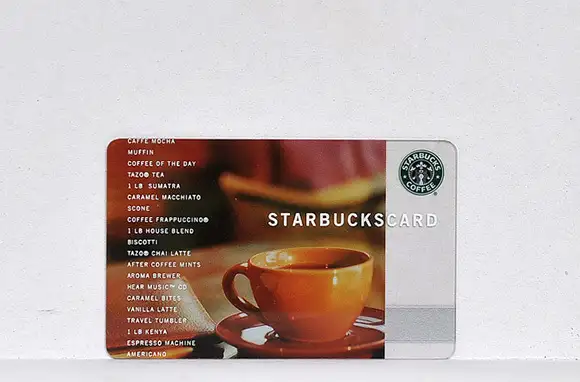
Avoid Commission Fees ... With Coffee
Starbucks addicts, rejoice! Here's a clever way to avoid having to pay a commission fee to convert that last bit of foreign cash to U.S. dollars at the end of a vacation. First, pick up a reloadable Starbucks Card before your international trip. Then, if you have leftover money in the local currency when youâre on your way home, use it to reload your card at the Starbucks location in your international airport.
The money you'll save on commission fees might just cover that triple-shot-no-foam-cinnamon-soy-mocha-Frappuccino with extra extra sprinkles.
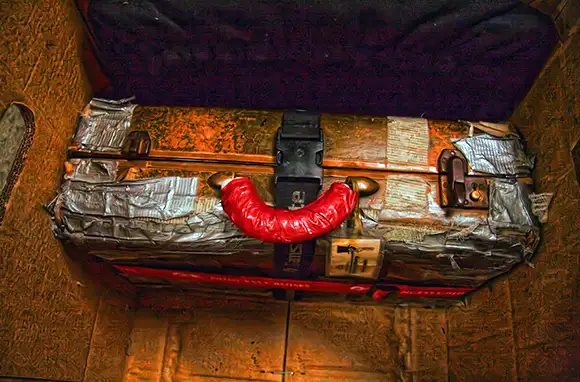
Pack Duct Tape
Duct tape can fix just about anything—including baggage. That's why we picked duct tape as one of the Top 10 Travel Essentials that Cost Less Than $10. Pack duct tape in your bag to protect your bag. Broken zippers, rips, and torn handles can be fixed with a sliver of trusty silver tape. Don't worry. You don't need to pack the whole heavy roll. Pick up a package of travel duct tape before your next trip.
Adapted from the story Seven Ways to Protect Your Luggage
by Caroline Costello. Follow Caroline on Google+.
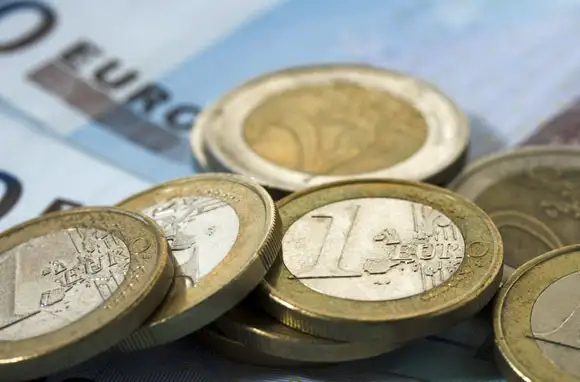
Keep Small Bills Handy
Changing or withdrawing large amounts of money minimizes the fees you'll pay to get local currency, but it also means you'll be traveling with far more cash—and larger bills—than you'd have on you at home. It's wise to make small denominations of currency easily accessible. That way, you won't pull out the local equivalent of a $100-dollar bill while attempting to buy a 30-cent souvenir. You also won't have to reach down into your jeans to get more money from an under-clothing money pouch.
Make money preparation part of your morning routine: As you're packing your day bag, make sure you've got a variety of small bills and coins at the ready for purchases such as food, souvenirs, and attraction entry fees. Squirrel away larger bills in your under-clothing money pouch, or tuck them into a secure part of your wallet or bag.
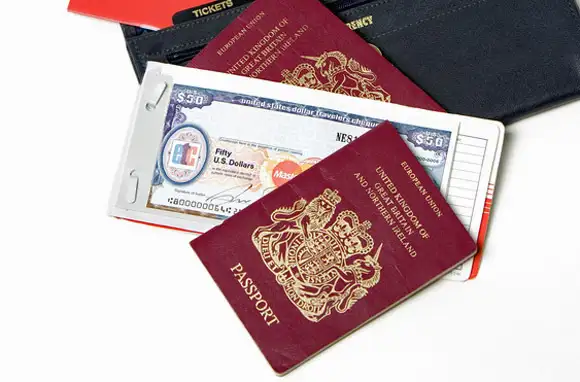
Leave the Traveler's Checks at Home
Traveler's checks are now widely considered outdated and a hassle. You run the risk of wasting time looking for a place that's actually able to cash your checks, and you'll be hit with hefty fees and poor exchange rates when you do. We advise you to rely primarily on plastic for travel money—credit cards for big-ticket items and debit (ATM) cards for cash.
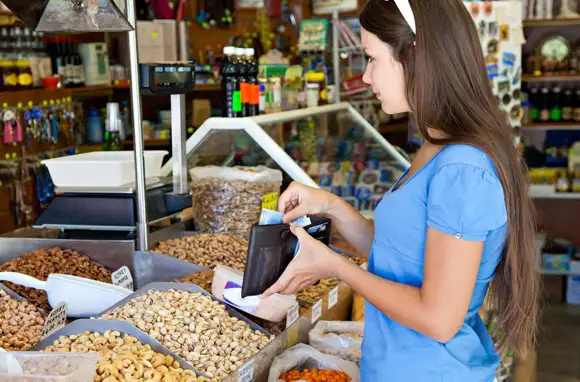
Divide Your Money into Multiple Safe Places
If you disregard all other advice about carrying money when traveling, take this tip to heart: Whenever possible, divvy up your travel cash and even credit cards into multiple safe spots. If you've got all your money in one place, it only takes one time for a thief to totally wipe you out. You can even apply this idea when you're out and about by keeping some money attached to your person and some in a bag you carry. That way, if your bag gets lost or snatched, you'll still have enough to get to a police station or back to your hotel.
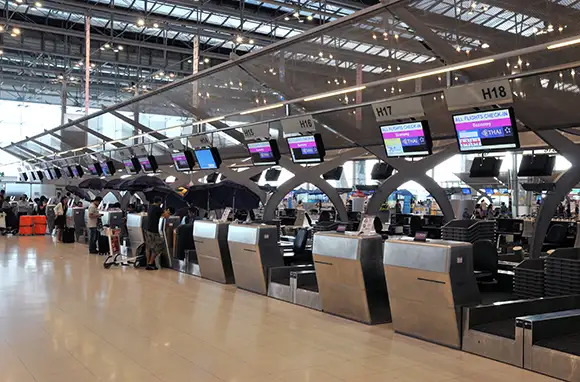
Purchase Excess Valuation on Your Luggage
Airlines will only compensate travelers up to a set amount for lost or damaged baggage. In the U.S., the airlines' liability is capped at $3,300 by the Department of Transportation (DOT) for domestic flights, which means you won't receive more than that amount in compensation for your luggage, no matter how treasured its contents are.
But there's an exception to this rule: If you're packing something really valuable, you may want to consider purchasing excess valuation (EV) from your airline. It's not insurance per se, but it increases the airline's liability limit. You'll likely have to ask your airline for it directly; carriers don't often advertise EV, and many travelers have never even heard of it. You can sometimes buy baggage insurance from car-rental companies and travel agencies as well.
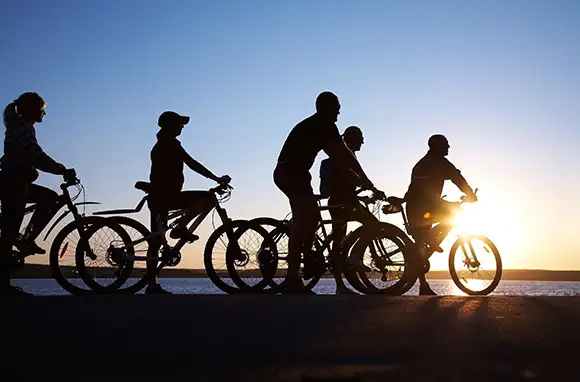
Get a Group Together
Having trouble paying for your next jaunt? Invite a few friends. The more people you can get to pool money into a single getaway, the better. Groups of travelers hitting the road together can see huge savings on packages, accommodations, and more, whether by taking advantage of low-priced vacation rentals or snapping up discounted group package rates.
Aer Lingus, for example, regularly offers discounted Ireland packages for groups of four or more people traveling together, with prices that drop much lower than the rates for couples. Those traveling with 10 people can get a free land-only package for the 11th group member from Gate 1 Travel.
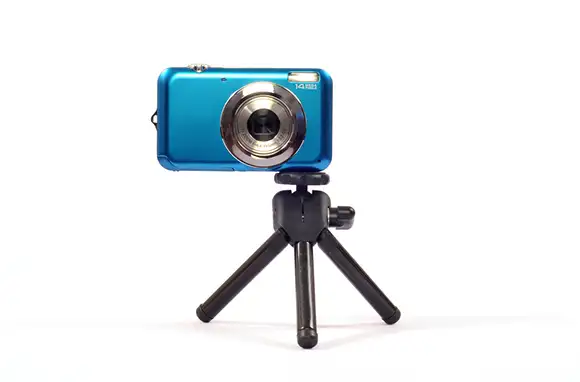
Use A Camera Extender
Use a camera extender or selfie stick instead of contorting your whole body for that Facebook photo op. We like the GorillaPod line of portable mounts for cameras and camera phones.
We hand-pick everything we recommend and select items through testing and reviews. Some products are sent to us free of charge with no incentive to offer a favorable review. We offer our unbiased opinions and do not accept compensation to review products. All items are in stock and prices are accurate at the time of publication. If you buy something through our links, we may earn a commission.
Related
Top Fares From Columbus, OH
Today's Top Travel Deals
Brought to you by ShermansTravel
Shop and Save with Country Inns...
Patricia Magaña
 Hotel & Lodging Deals
Hotel & Lodging Deals
$229 -- Chicago: Discounted Rates and...
Francesca Miele
 Hotel & Lodging Deals
$229+
Hotel & Lodging Deals
$229+
$188 -- Honolulu: Save on Oceanview...
Abigail Lamay
 Hotel & Lodging Deals
$188+
Hotel & Lodging Deals
$188+




